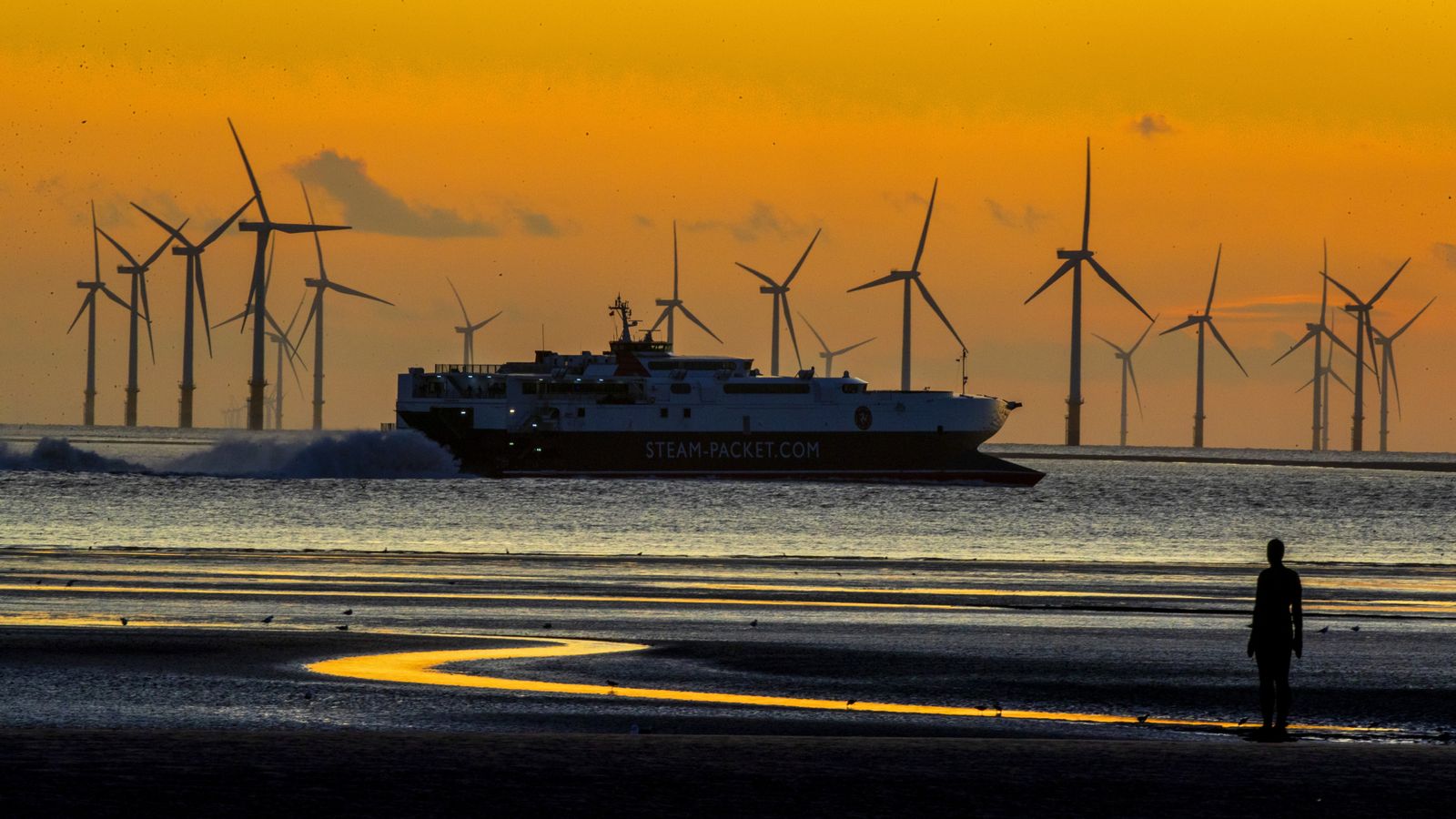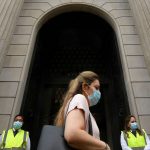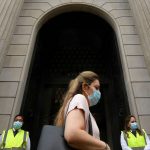Ever since Theresa May’s government pushed through legislation committing the UK to be net zero by 2050, questions have been asked about the monumental cost likely to be involved, something few politicians are as eager to discuss as the targets themselves.
On Tuesday, though, the independent Office for Budget Responsibility had a go at answering that question.
The answer is pretty sobering. The cost of the transition to government, as the OBR points out, depends on which of the costs involved the state choses to take on.
The OBR assumes the government will pick up about a quarter of the cost to the economy – and puts this cost at around £350bn over 30 years.
The implication is that the total cost of the transition will be £1.4trn – three-quarters of which will be borne by households and businesses rather than the government itself, for example, meeting the cost of replacing existing household gas boilers with costly zero carbon alternatives such as solar powered electric heating, ground source heat pumps or electric boilers.
To this prediction, though, a couple of important caveats must be added. The first is that the total cost of £1.4trn assumes that the transition starts now and is not delayed. The second is that the OBR is quoting the £350bn cost to the government as a net cost which, accordingly, makes certain assumptions about money that is coming to the government, as well as money that it spends.
The OBR identifies a number of risks to government receipts arising from climate change and the transition to zero carbon, specifically, the sum currently collected by the Treasury in fuel duty and vehicle excise duty – equal to 1.5% of GDP. These will disappear as people move to driving electric vehicles rather than petrol or diesel vehicles.
The OBR does note, though, that the transition provides the Treasury with money-raising opportunities, such as taxing car emissions more heavily, although since no chancellor has dared increase fuel duty for a decade it would, perhaps, be unwise to bank on that.
Climate change and the cost of the transition to net zero is, sadly, only one of three risks to the public finances identified by the OBR’s chairman, Richard Hughes, as being “large and potentially catastrophic”.
The first of these, clearly, is the pandemic.
Mr Hughes noted that the pandemic “imparted an extraordinary shock to the UK’s public finances, with borrowing reaching a peacetime high of around 15% of GDP in 2020-21, the second highest deficit among 35 advanced economies”.
He said that, in contrast to the financial crisis, where the biggest fiscal impact was a collapse in tax receipts, the big increase in public borrowing this time was due to a surge in spending, with the government’s coronavirus rescue package second only in the G7 to that of the United States.
Unlike other countries, which were able to spend comparatively more during the pandemic on supporting businesses to survive the crisis, the biggest element of higher public spending in the UK was the vast expense in preventing the NHS from collapse.
Mr Hughes said the UK spent three times more on support to the health sector during the pandemic than the average advanced economy. This was due to the relatively low levels of spare capacity with which the NHS entered the crisis compared with other advanced economies like Germany and France, which pay for healthcare through compulsory social insurance systems rather than general taxation as in the UK.
The OBR estimates the government is facing around £10bn per year in what it calls “pandemic legacy pressures” in three areas, including £7bn for the NHS, around £1bn per year for catch-up schooling and an extra £2bn annually for the railways, whose budgets have been battered by a collapse in passenger numbers.
Mr Hughes added: “This is by no means an exhaustive list. There are pandemic-related backlogs in the courts too. And that’s before looking at the cost of returning overseas development spending to 0.7% of national income or reforming adult social care.”
The good news, such as it is, is that the OBR believes the impact on the national debt posed by climate change will be less than that caused by COVID-19, provided early action is taken to reach net zero. It estimates that the transition will add 21% of GDP to the government’s debt over the next 30 years – some £469bn in today’s money – which, as it pointed out, is “slightly less than the pandemic is expected to add [to debt] in just two [years]”.
The third major fiscal risk identified by the OBR is the already vast level of debt accumulated by the government and the danger of higher borrowing costs.
Mr Hughes said: “First and foremost, debt is three times higher than it was in 2000, so, all else equal, a given change in the cost of debt will have three times the impact on public spending now than it did 20 years ago.”
He noted that the proportion of UK government gilts owned by foreign investors had risen from 10% in the late 1980s to around 30% today. This puts the UK at greater risk of a change of mood among those investors since, unlike domestic investors such as pension funds, they are not obliged to hold gilts.
The other factor the OBR highlights is the increased sensitivity of UK government borrowing to higher interest rates. This is due to the Bank of England’s asset purchase scheme (Quantitative Easing in the jargon) in which Threadneedle Street has effectively issued overnight reserves to buy long-dated gilts from the market – which has the effect of reducing the maturity of the government’s debt.
Mr Hughes went on: “The consequence for the public finances is that twice as much of the cost of any increase in interest rates would be felt in the first year rather than being spread out over time…indeed, with debt three times higher and twice as much of any interest rate rise being felt the first year, a 1% rise in interest rates would now raise government’s debt servicing costs by 0.5% of GDP in the first year compared with less than 0.1% of GDP in the early 2000s.”
He said that inflating away the government’s debt, as in the past, was no longer possible due to the shortening of the effective maturity of public debt and due to the relatively high proportion of UK government gilts whose coupons (interest payments) are linked to the rate of inflation.
The OBR also sketched out a nightmare scenario – described as an “extreme case” – in which investors lose confidence in the UK’s creditworthiness and dump gilts accordingly.
It added: “This leads to a vicious circle where rising debt raises borrowing costs, which in turn increase the rate at which debt rises.
“In this scenario, an adverse shock, similar in magnitude to that experienced in the financial crisis, and a loss of investor confidence lead to a sterling depreciation and a rise in the risk premium on gilts.
“Higher inflation and the falling pound also force the Bank of England to raise Bank Rate to 4%. The higher borrowing costs mean that growth remains weak.
“The escalating crisis also forces the government to borrow at shorter maturities so that higher market rates feed through into debt interest costs even more quickly.”
Under this scenario, borrowing would hit 15% of GDP in 2029-30, close to the level seen last year during the pandemic.
The average rate of interest paid on government gilts would be 10% – a rate last seen in 1991 – and the annual cost of meeting the government’s interest payments would hit an all-time high of 9.5% of GDP.
Chillingly, in this section of the report, the OBR recalls the crisis of 1976 in which the UK government, under prime minister Jim Callaghan and chancellor Denis Healey, was forced to seek a bail-out from the International Monetary Fund and, as a consequence, cut public spending. The Winter of Discontent followed and the rest is history.
Some people, particularly advocates of so-called Modern Monetary Theory, believe the UK does not need to worry about the vast amounts of debt it is piling up.
For the rest of us, it is difficult not to read this report and shiver.






















